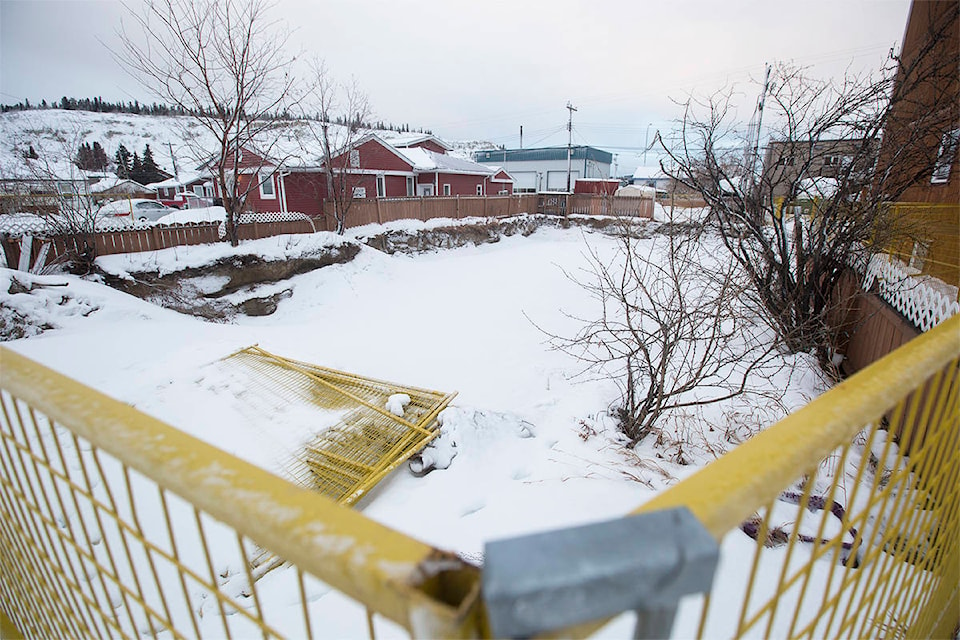More than a half dozen residents are expressing their opposition to a proposed zoning change that would reduce the number of required parking spaces for a planned development at 410 Cook Street from 11 to eight.
A public hearing on the proposed change was held at Whitehorse city council’s Feb. 22 meeting with the 13 written submissions for the hearing being made available on the city’s website Feb. 23.
As Valerie Braga, the city’s director of corporate services, reported to council, most of the submissions – eight to be precise – expressed opposition to the proposal.
Another three were written in support with two asking more general questions about parking regulations and the input process.
Developers are working on a housing project that would feature 16 micro-units, but are asking for the change in required parking spots due space constraints on the property.
Under the proposal, the required residential parking spaces would change from eight (at one parking spot per two units) to seven (at less than one space per two units), from two spaces for visitor parking (at a required one spot for every seven units) to none, and from one required loading space for 930 cubic meters of gross floor area to none.
Commercial parking would remain the same at one space with an option to pay cash-in-lieu of providing that space.
Those who noted their opposition to the proposal argued it will put more demand on already tight parking in the downtown. It was also argued by many that there is an assumption residents of the new development won’t have vehicles which may not be true, and many noted efforts to add density to the downtown should not come at the expense of meeting certain requirements such as bylaws put in place for parking.
As Barbara Adam stated in her submission: “Lack of on-site parking leading to street congestion results in poor visibility at intersections where drivers are forced to enter the intersection to check for oncoming traffic.
“Additionally, electrical plugs are trailing across sidewalks posing a serious hazard to postal workers and the public. Snow removal is another challenge when there are more and more vehicles on the streets.”
She went on to note restricting parking spaces does not mean residents will have fewer vehicles. Whitehorse is a community with many active people who use their vehicles to access the wilderness or to simply get to facilities outside of the downtown like the Canada Games Centre, Yukon Arts Centre or other facilities, she said.
Others argued it should be the design of the building that changes to accommodate bylaws that have already been established.
“We oldtown residents reluctantly agreed to the city densification plan, as it was originally intended — there would be a requirement for parking, building offsets from the property line, a required amount of open space for landscaping/greenery and sufficient parking,” reads a submission signed by Keith Williams and Diane Brent. “These current requirements are established in the city bylaw, and need to be adhered to. Variance requests should be for rare situations, not negatively impact neighbours’ quality of life and not stray from the intent of the original plan and law and not become standard practice for developers looking to unduly enrich themselves at the expense of old-town residents.”
Meanwhile, those expressing support for the development pointed to the high need for housing in the city.
As Brett Chandler wrote: “This is a project that stands to increase the supply of affordable housing significantly. We need it, and I would not want to see the number of units reduced for the sake of providing more parking.”
Similarly, Taylor Tiefenbach asked the city to “please prioritize people over cars and allow this development to go through with the amended parking proposal.”
In stating his support for the change, Nathan Miller also suggested that some space on the property should be made available for bicycle (or other active transportation means) storage and that the city should be keeping in mind the long-term impacts when decisions like this are made.
An administrative report on the public hearing is expected to come forward to council March 15. Council would then vote on the final two readings of the bylaw March 22.
Contact Stephanie Waddell at stephanie.waddell@yukon-news.com
